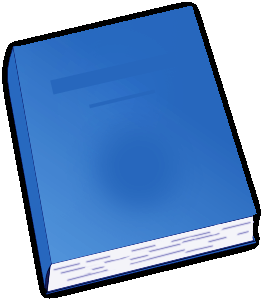Supplementary Copyright Statutes, US Copy. Office By: Library of Congress. Copyright Office |
|---|

The book "Supplementary Copyright Statutes, US Copyright Office" is an incredibly detailed and comprehensive resource for anyone interested in copyright laws and regulations in the United States. Compiled by the Library of Congress Copyright Office, it serves as an essential guidebook for professionals, academics, and individuals looking to navigate the complex world of copyright.
What sets this book apart is its meticulous organization and thoroughness. It covers a wide range of topics related to copyright, including registration procedures, international copyright agreements, fair use guidelines, and the rights and responsibilities of copyright holders. The information provided is up-to-date and reflects the most recent changes in copyright laws, ensuring readers are well-informed on current regulations.
The layout and design of the book are user-friendly, with clear headings and subheadings, making it easy to locate specific information. The inclusion of relevant case studies and examples further enhances understanding, illustrating how the discussed statutes are applied in real-life scenarios. Additionally, the book incorporates clear and concise explanations, making complex legal jargon accessible to non-lawyers.
Moreover, the book goes beyond discussing statutory provisions by providing valuable insights into the philosophy and rationale behind copyright laws. It explores the tension between granting exclusive rights to creators while promoting the sharing of knowledge and creativity. By delving into the historical development and the underlying principles of copyright, the book offers a deeper understanding of the subject matter.
One notable strength of this book is the resources and references it provides, including an extensive bibliography and a list of relevant court cases. These additional materials serve as excellent starting points for further research and enable readers to explore specific topics in greater depth.
While this book undeniably excels in its coverage of copyright statues, it may not be suitable for casual readers or those with a passing interest in the subject. The level of detail and legal terminology employed can be overwhelming for those without a background in law or copyright-related fields. However, for those willing to invest time and effort into understanding copyright law, this book is an invaluable resource.
In conclusion, "Supplementary Copyright Statutes, US Copyright Office" is a comprehensive and authoritative guidebook that successfully covers a wide array of topics related to copyright laws in the United States. Its meticulous organization, practical examples, and deep insights make it an essential reference source for copyright professionals, lawyers, and anyone wanting to delve into the intricacies of copyright legislation. Whether reading cover to cover or as a reference for specific topics, this book provides a thorough understanding of copyright law in the United States. Circular 3 Copyright Notice ======================================================================== INTRODUCTION The use of a copyright notice is no longer required under U.S. law, although it is often beneficial. Because prior law did contain such a requirement, however, the use of notice is still relevant to the copyright status of older works. This circular discusses both the copyright notice provisions as originally enacted in the 1976 Copyright Act (title 17, U.S. Code), which took effect January 1, 1978, and the effect of the 1988 Berne Convention Implementation Act, which amended the copyright law to make the use of a copyright notice optional on copies of works published on and after March 1, 1989. Specifications for the proper form and placement of the notice are described in this circular. Works published before January 1, 1978, are governed by the previous copyright law. Under that law, if a work was published under the copyright owner's authority without a proper notice of copyright, all copyright protection for that work was permanently lost in the United States. The Uruguay Round Agreements Act of 1994 (URAA) (PL 103 465) modified the effect of publication without notice for certain foreign works. Under this Act, copyright is automatically restored, effective January 1, 1996, for certain foreign works placed into the public domain because of lack of proper notice or noncompliance with other legal requirements... Continue reading book >>
|
| This book is in genre |
|---|
| Non-fiction |
| eBook links |
|---|
| Wikipedia – Library of Congress. Copyright Office |
| Wikipedia – Supplementary Copyright Statutes, US Copy. Office |
| eBook Downloads | |
|---|---|
|
ePUB eBook • iBooks for iPhone and iPad • Nook • Sony Reader |
Kindle eBook • Mobi file format for Kindle |
|
Read eBook • Load eBook in browser |
Text File eBook • Computers • Windows • Mac |
| Review this book |
|---|